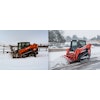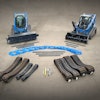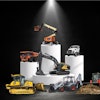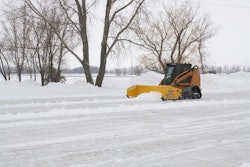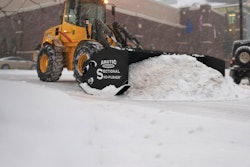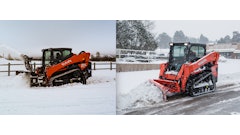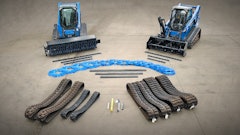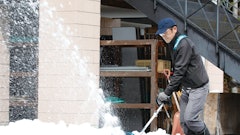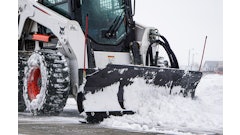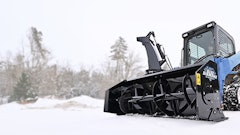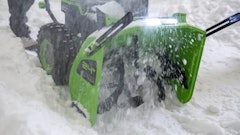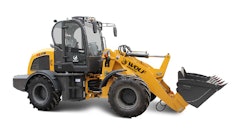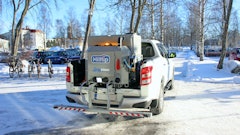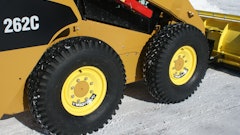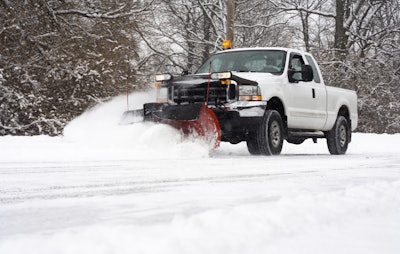
If you budget strategically for snow revenue, you won’t feel as defeated if it doesn’t snow. If you offer other services in addition to snow and ice management, the safest number to budget for snow is $0 income.
This article was originally published by the Snow and Ice Management Association (SIMA)
By Mike Rorie
A dry winter is always a tough business situation to overcome for snow removal contractors. Lack of revenue at a time when there aren’t a lot of alternatives to sell other services only compounds the situation for most companies. So what can snow & ice professionals do?
If snow income is part of a company’s forecasted budget, following are a few suggestions that can help snow and ice contractors increase their accuracy.
Find your sweet spot. Snow removal is not as much feast or famine as most people tend to believe. If you budget strategically for snow revenue, you won’t feel as defeated if it doesn’t snow. If you offer other services in addition to snow and ice management, the safest number to budget for snow is $0 income.
Find your sweet spot. Snow removal is not as much feast or famine as most people tend to believe. If you budget strategically for snow revenue, you won’t feel as defeated if it doesn’t snow. If you offer other services in addition to snow and ice management, the safest number to budget for snow is $0 income.
Learning to operate a profitable business using your core income means you can’t get hurt if it doesn’t snow. Most contractors don’t want to face this reality, but this is the truest look at your business that you can take. Making budgeting decisions with these numbers is a very sound, conservative angle that I strongly recommend.
Average it out. Define an average for your snow revenue based on what you have done for the past several years. This is a much more reliable method for forecasting snow income versus using the previous year or your biggest year as your baseline for projected revenue. Using the previous or biggest year totals is simply not advisable.
Looking back three, five, seven and 10 years, if possible, is very insightful. When I ran GroundMasters, we used to look at our revenue trends all the time and would use this average to our advantage with many of our long-term customers.
Track your growth. I also tracked my company’s growth year over year. Make no mistake, I’m referring to job growth, not sales from year to year.
For example, if we plowed, salted and performed sidewalk work on all of our jobs, we tracked our billable income or per-round income. Knowing whether this number is increasing or decreasing is paramount in accurate budget forecasting.
Hopefully, you are growing your customer base year after year. With that in mind, if you are growing by 10%, for example, don’t let this affect the average you use for budgeting the next season’s estimated income. This way you automatically increase your hedge by using the next year’s average at a 10% reduction (or whatever your growth is over the previous year). This increases the cushion if you have a light income year.
Put your averages to work. If you have been providing snow services to a client for a number of years (three- to five-year range), consider presenting your average as an annual price for your contract. For example, the first year you billed $11,000, the second $20,000 and the third $14,000. That adds up to $45,000. Consider offering $15,000 a year to service the property and ask for a three-year agreement.
You can determine how to bill this depending on what other services you perform for the customer. This method is typically accepted by your zero-tolerance customers. They understand that contractors have a cost every year to provide snow removal services, and simply taking that average is a logical agreement for both parties.
Maintain your level of service. When you sell your services like this, your service levels should remain the same or else you need to adjust the price to reflect changes. I would, however, suggest adding a blizzard clause to the agreement if you don’t have one in your existing scope. Doing so protects both you and the client.
Track your services. Throughout the agreement, you should still track services for this customer just as you would if you were billing for services rendered. This can influence the average that the customer is billed for the next three-year agreement.
Most contractors provide as much service as they can; therefore, these averages should be good numbers for you and the customer — particularly now that you will be managing a fixed-income contract against customer expectations and not “billing as much as I can.”
An annual contract isn’t intended to be a win-lose or all-or-nothing agreement. These contracts can be win-win agreements that average your revenue and your customer’s costs.
Snow readiness fees. Another type of agreement you can offer to soften the ups and downs of snow revenue is an annual or monthly snow readiness fee, which is designed to have the customer pay something even if it doesn’t snow. This can help with cash flow during the winter and also helps with budgeting.
The most common way to structure this is to charge a monthly fee that represents one event or round to the site. If you provide service, the customer has a credit for up to that amount. If the month was dry or uneventful, then you are even. The contractor uses the income to cover the overhead costs of having the equipment ready for a snow event, which is how the sales team can present it to the customer — it’s an insurance policy.
Average it out. Define an average for your snow revenue based on what you have done for the past several years. This is a much more reliable method for forecasting snow income versus using the previous year or your biggest year as your baseline for projected revenue. Using the previous or biggest year totals is simply not advisable.
Looking back three, five, seven and 10 years, if possible, is very insightful. When I ran GroundMasters, we used to look at our revenue trends all the time and would use this average to our advantage with many of our long-term customers.
Track your growth. I also tracked my company’s growth year over year. Make no mistake, I’m referring to job growth, not sales from year to year.
For example, if we plowed, salted and performed sidewalk work on all of our jobs, we tracked our billable income or per-round income. Knowing whether this number is increasing or decreasing is paramount in accurate budget forecasting.
Hopefully, you are growing your customer base year after year. With that in mind, if you are growing by 10%, for example, don’t let this affect the average you use for budgeting the next season’s estimated income. This way you automatically increase your hedge by using the next year’s average at a 10% reduction (or whatever your growth is over the previous year). This increases the cushion if you have a light income year.
Put your averages to work. If you have been providing snow services to a client for a number of years (three- to five-year range), consider presenting your average as an annual price for your contract. For example, the first year you billed $11,000, the second $20,000 and the third $14,000. That adds up to $45,000. Consider offering $15,000 a year to service the property and ask for a three-year agreement.
You can determine how to bill this depending on what other services you perform for the customer. This method is typically accepted by your zero-tolerance customers. They understand that contractors have a cost every year to provide snow removal services, and simply taking that average is a logical agreement for both parties.
Maintain your level of service. When you sell your services like this, your service levels should remain the same or else you need to adjust the price to reflect changes. I would, however, suggest adding a blizzard clause to the agreement if you don’t have one in your existing scope. Doing so protects both you and the client.
Track your services. Throughout the agreement, you should still track services for this customer just as you would if you were billing for services rendered. This can influence the average that the customer is billed for the next three-year agreement.
Most contractors provide as much service as they can; therefore, these averages should be good numbers for you and the customer — particularly now that you will be managing a fixed-income contract against customer expectations and not “billing as much as I can.”
An annual contract isn’t intended to be a win-lose or all-or-nothing agreement. These contracts can be win-win agreements that average your revenue and your customer’s costs.
Snow readiness fees. Another type of agreement you can offer to soften the ups and downs of snow revenue is an annual or monthly snow readiness fee, which is designed to have the customer pay something even if it doesn’t snow. This can help with cash flow during the winter and also helps with budgeting.
The most common way to structure this is to charge a monthly fee that represents one event or round to the site. If you provide service, the customer has a credit for up to that amount. If the month was dry or uneventful, then you are even. The contractor uses the income to cover the overhead costs of having the equipment ready for a snow event, which is how the sales team can present it to the customer — it’s an insurance policy.
Look out for yourself
Whatever agreements you come up with for your market and your company, they should never be win-lose. This is not a sustainable business practice for most contractors. I would do everything I could to make snow revenue part of your business, but not something that negatively affects your annual success.
Mike Rorie has been a participant in the snow and ice industry for more than three decades. He founded, grew and eventually sold GroundMasters, a Cincinnati-based commercial grounds maintenance provider. He is now a supplier to the industry as the CEO of GIS Dynamics, parent company to Go iLawn.
Mike Rorie has been a participant in the snow and ice industry for more than three decades. He founded, grew and eventually sold GroundMasters, a Cincinnati-based commercial grounds maintenance provider. He is now a supplier to the industry as the CEO of GIS Dynamics, parent company to Go iLawn.
Interested in subscribing to SIMA's magazine?
